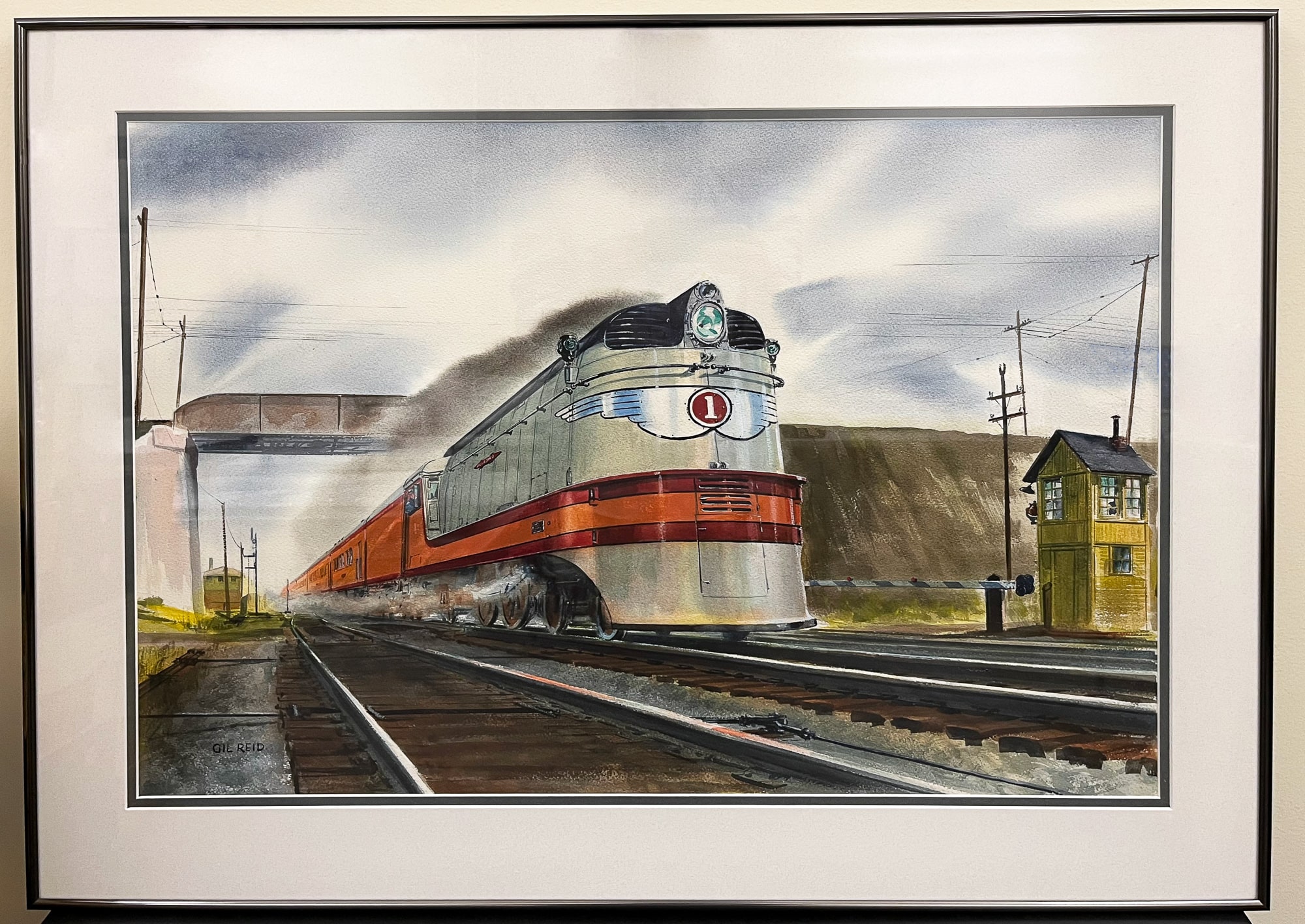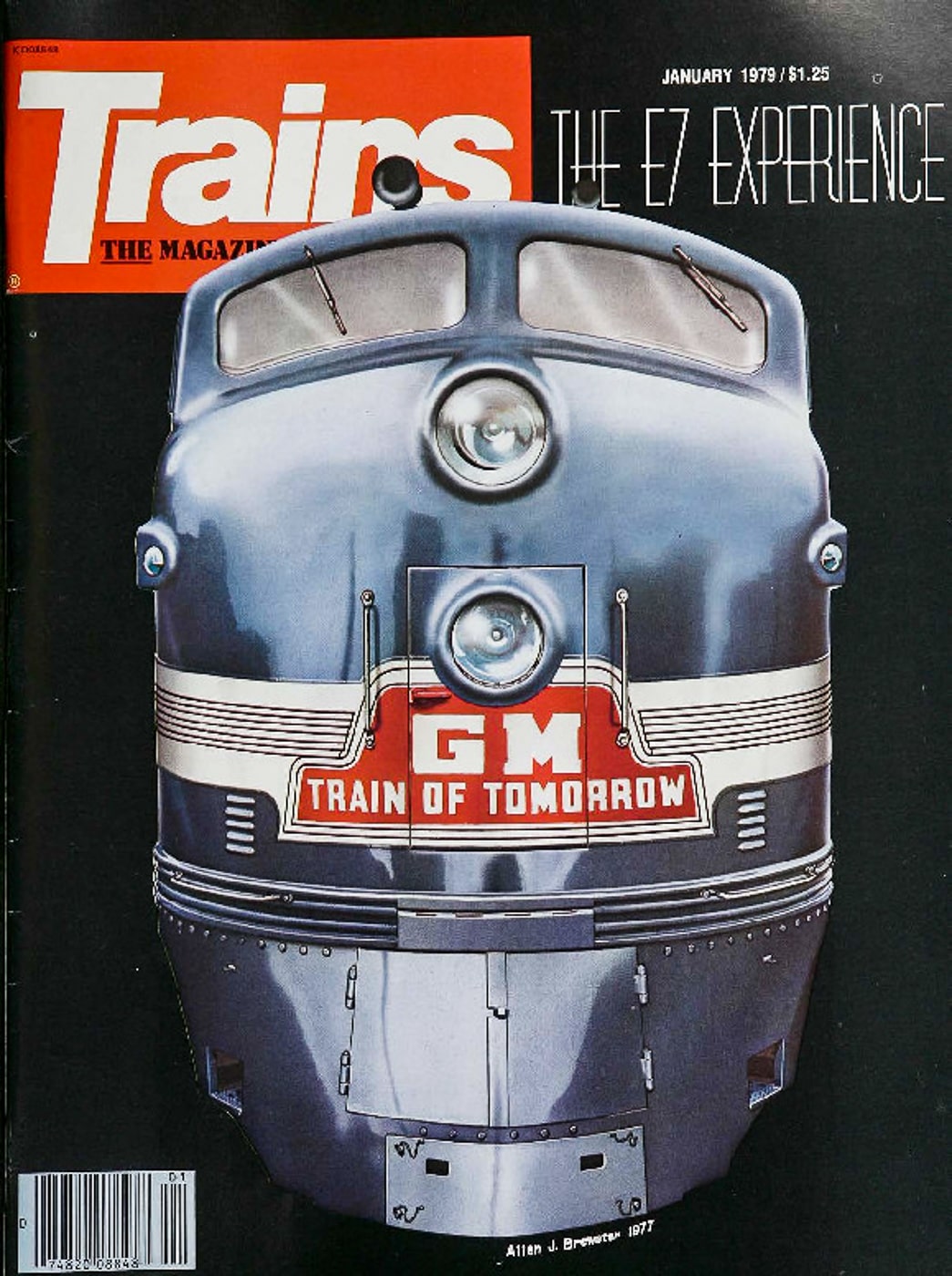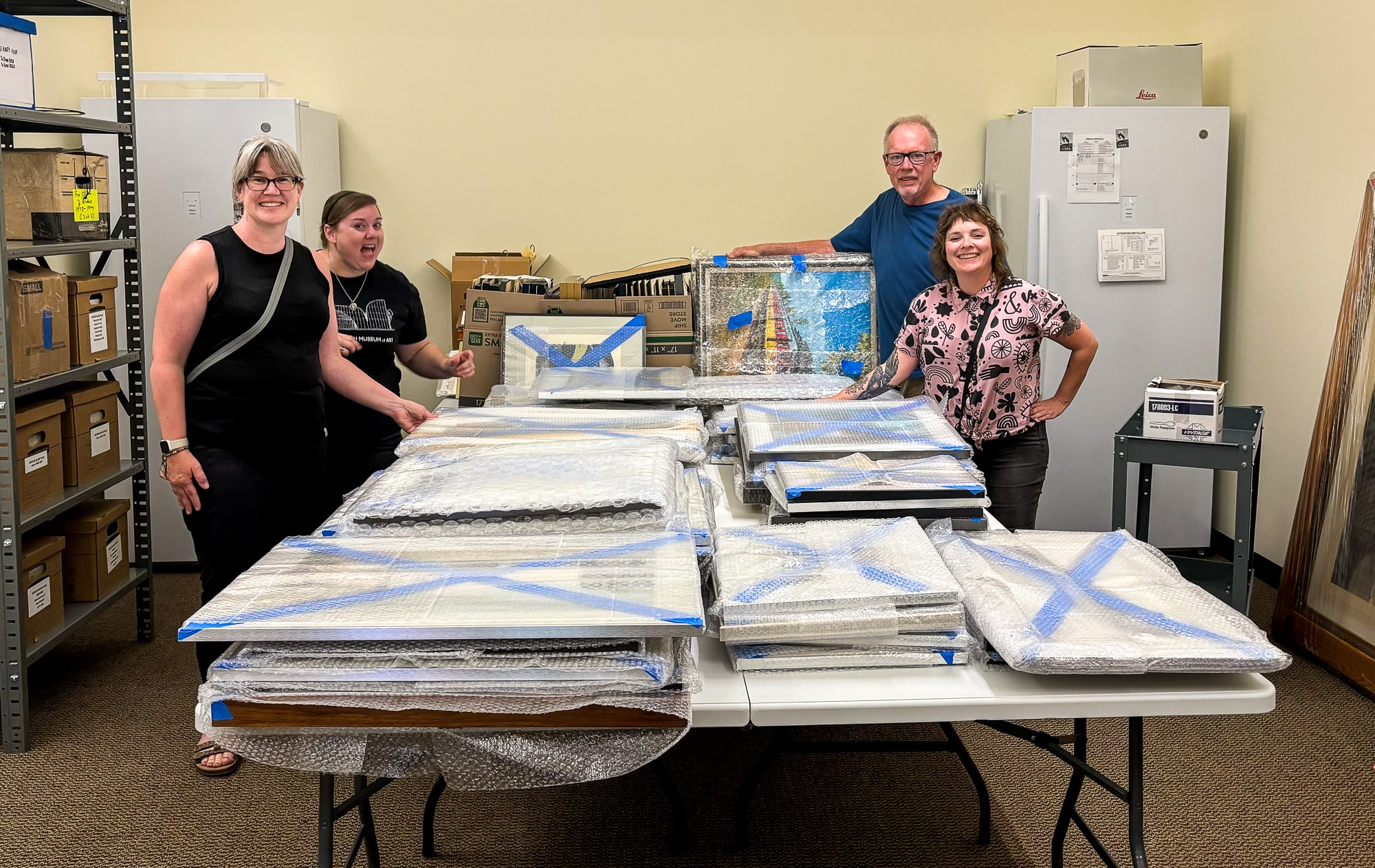The Center for Railroad Photography & Art has been named the recipient of Kalmbach Media’s historic art collection, totaling fifty-eight original paintings spanning the hallowed rail publishing company’s history since its founding by A.C. Kalmbach in 1934.
The announcement was made today by Scott Lothes, Executive Director of CRP&A, who worked closely with Kalmbach executives in their search to locate the right permanent home and keep the collection together.
“Kalmbach is a name that has thrilled, educated, and inspired generations of railfans, photographers, and artists, and this collection couldn’t be a better expression of the Center’s mission to preserve and celebrate significant railroad art,” said Lothes. “It’s a tremendous honor and responsibility to care for the Kalmbach Art Collection, and to honor the work of so many artists and designers who poured their talents into illustrating the railroads that they loved.”
The Kalmbach Art Collection is filled with landmark work from renowned artists such as Howard Fogg, George Gloff, Gil Reid, Ted Rose, John Swatsley, and many others. The works were commissioned for use in Trains magazine and in Kalmbach Books—in many cases created by the company’s own designers and artists. Some works were viewed by tens of thousands of railroad fans, appearing inside the magazine, on its covers, or in best-selling books such as The Hiawatha Story and The Nickel Plate Story.
The collection was recently moved to the Center’s archive in Madison, Wisconsin, not far from Kalmbach’s offices in Waukesha. In late June, Kalmbach Media sold many of its marquee magazine titles, including Trains, Classic Trains, and Model Railroader, to Firecrown Media in Chattanooga, Tennessee.
“The Center is beyond thrilled to be the recipient of the Kalmbach Art Collection,” said Bon French, Chairman of the Center’s board. “Not only is it a spectacular collection in its own right, but the art invokes many memories for those of us that frequented the hallowed halls of the Kalmbach offices. As the Kalmbach name will otherwise disappear, it’s great that we can preserve the legacy of a ninety-year-old company with a revered name through the collection.”
“We couldn’t have found a better home for our historic collection of railroad art than the Center for Railroad Photography & Art,” said Dan Hickey, Chief Executive Officer for Kalmbach Media. “We are confident that it is the best organization to both preserve the Kalmbach collection and share it with the public. Our founder, A.C. Kalmbach, would be very proud to know that the railroad art accumulated by Kalmbach Media and enjoyed by our employees for decades will also be appreciated by future generations through the expert stewardship of the Center.”
“I can’t imagine a better outcome for Kalmbach’s corporate art collection than to have it find a permanent home with the Center,” said Kevin P. Keefe, a Center board member and former vice president-editorial at Kalmbach. Keefe brought the collection to light in the mid-2010s when he detailed the most important pieces and their histories in a company report he authored prior to his retirement. “In so many ways, Trains and Kalmbach Books played indispensable roles in creating the world of railroad imagery we love so much, and the company’s original art is a big part of that legacy.”
“Over the years, there has been a strong bond between Kalmbach and the Center,” Keefe added. “The donation of this collection is a celebration of that relationship.”

Roaring through Rondout, watercolor on paper by Gil Reid, appeared on the cover of Kalmbach’s most successful hardcover book, The Hiawatha Story. Reid’s painting illustrates Milwaukee Road Class A Atlantic 1 in 1935.

Electro-Motive E7 for Train of Tomorrow, tempera on board, by Allen J. Brewster, as seen on the cover of the January 1979 issue of Trains magazine.

Arrival of the art collection at the Center’s archive in Madison, Wis. Pictured from left: Inga Velten, Lisa Hardy, Kevin Keefe, and Adrienne Evans. Photo by Gil Taylor.
